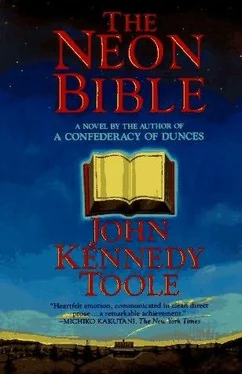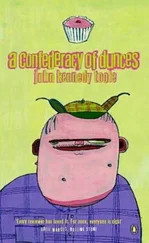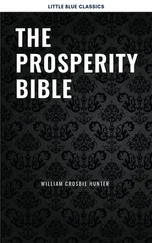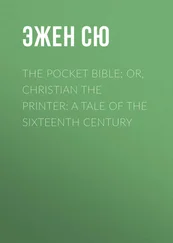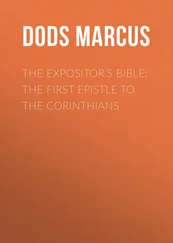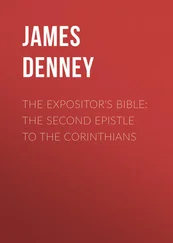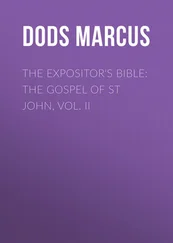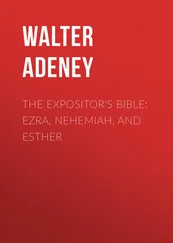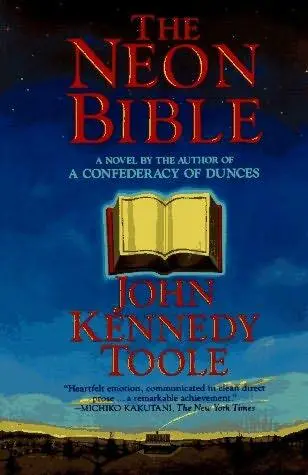
The Neon Bible
by John Kennedy Toole
The novel you hold in your hands represents the culmination of a strange and ironic chain of events. Almost twenty years to the day before its publication, John Kennedy Toole parked his car in a secluded spot near the Gulf Coast town of Biloxi, Mississippi, ran a length of garden hose from the exhaust pipe into the rear window, locked himself inside, and closed his eyes upon a world to which he had been acutely perceptive and sensitive but in which he was apparently unable to survive. It was March 26, 1969, and the New Orleans native was only thirty-one.
The circumstances and coincidences that have led to The Neon Bible's being in print at all partake of the very substance of Victorian romance: the tragic death of a promising young writer; the implacable determination of a grief-stricken mother whose faith and devotion were finally justified when her beloved lost son achieved posthumous fame; and a subsequent tangle of lawsuits involving legacies and publication rights.
Following John Toole's death, his estate was appraised at $8,000 by a lawyer's inventory that made no mention of the typescripts of two novels. His mother, Thelma Ducoing Toole -- product of a typical New Orleans ethnic potpourri, original Creole French settlers and nineteenth-century Irish immigrants -- found herself at sixty-seven managing a household, caring for an invalid husband, and enduring an immeasurable share of grief. The loss of any child is agonizing for a caring parent, but the suicide of an only child made her suffering all the more intense.
"The darling," as Thelma referred to him, born when she was thirty-seven and had been assured by doctors that she would never have a child, was from the beginning exceptional. Bright, creative, talented in music and art, John skipped two grammar school grades and later attended Tulane University and Columbia graduate school on scholarships. During two years in the army in Puerto Rico, he completed A Confederacy of Dunces, a boisterous, picaresque novel about his New Orleans, a uniquely diverse city more Mediterranean than American, more Latin than Southern. In 1963 he submitted the work to Simon and Schuster, where it came to the attention of editor Robert Gottlieb. For two years, encouraged by Gottlieb, John made revisions, gradually growing more and more depressed, until he finally abandoned hope.
Meantime he was teaching at a New Orleans college, pursuing a Ph.D. in English, and living at home, where his salary relieved strained financial circumstances. His father was incapacitated by deafness, and the private elocution lessons with which Thelma had for years supplemented their income were no longer fashionable. Always rather reserved, even secretive, despite his marked skill at mimicry and his wry comments on people and events around him, John revealed little of his personal life to anyone. Only a few friends even knew that he was a writer, much less that he had submitted a novel to a publisher. During the 1968 fall semester, colleagues noticed a growing paranoia, and in January 1969 John disappeared from the college and his home. His family heard no more of him until that fateful March day when policemen came to tell them their son was dead by his own hand. He had left a note addressed "To my parents," which his mother read and then destroyed.
For Thelma the weeks of agonizing over John's whereabouts now stretched into years of unrelenting maternal sorrow over his suicide. She felt abandoned, even betrayed, the son to whom she had devoted the past three decades dead, her husband isolated in his deafness. Life seemed to stand still, mired in a swamp of despair, until one day she came across the typescript of A Confederacy of Dunces and found a new purpose. There followed five more years of frustrating grief during which her husband died, her own health declined, and eight publishers rejected the novel. "Every time it came back, I died a little," she was later to recall. Whatever message John's suicide note had contained, she convinced herself that it was the rejection of the novel that had made life unbearable for her darling.
In 1976, through a happy circumstance, she learned that Walker Percy was teaching a creative writing course at Loyola University. One day she appeared in his office, thrust the novel into his hands, and dramatically announced, "It's a masterpiece." Though understandably reluctant at first, Percy was so impressed by her adamant determination that he agreed to read it. Pleased and amazed by what he found in those worn and battered pages, he convinced Louisiana State University Press to publish A Confederacy of Dunces. In 1981 the novel received the Pulitzer Prize and to date has been translated into more than ten foreign languages.
Fame came too late for John Kennedy Toole, but with the genius of her son officially certified, his mother began to see people again and to grant interviews. In public performances she dramatized scenes from the novel, discussed her son, played the piano, and sang old songs such as "Sunny Side of the Street," "Way Down Yonder in New Orleans," and "Sometimes I'm Happy." Inevitably at some point in the program she would announce in carefully enunciated English, a result of all those years of studying and teaching elocution, "I walk in the world for my son." It became her signature, her justification for whatever pleasure and satisfaction she derived from her long-delayed moment in the spotlight.
It was at the time of the publication of Confederacy that, through another sequence of the coincidences with which the story of John Kennedy Toole abounds, I became a friend of Thelma's. As a student in Walker Percy's 1976 creative writing class, I heard firsthand his initial impressions of that remarkable woman and her son's remarkable novel. After my early review of Confederacy was published, Thelma called to thank me for my praise of the novel and to invite me to visit. We discovered that we lived only three blocks apart, and during the period when she emerged from the shadow of heavy grief that had shrouded her for a decade, we met once or twice a week to discuss literature, theater, opera, the life and career of her son, and her hopes for a movie based on the novel. In cramped, old-fashioned script she composed numerous letters and a memoir of John, which I typed. Though she rarely left home, since any movement required her to use a walker, one memorable evening a group of us escorted her to Baton Rouge for the premiere of a musical based on Confederacy. She was ecstatic over the performance and the attention she received from the director, actors, and audience.
During these years she recalled the existence of an earlier novel and located among John's effects a typescript entitled The Neon Bible. When he was fifteen and had just learned to drive, he had invited her to ride with him to Airline Highway to see something amusing. He parked in front of a monolithic concrete building and pointed to an enormous neon sign shaped like an open book, with the words "Holy Bible" on one page and "Midcity Baptist Church" on the other. Together they laughed at its tacky ostentation, but she did not know then that he had found the title and inspiration for his first sustained creative effort. About the same time he spent a few days with a classmate visiting relatives in rural Mississippi, the setting for The Neon Bible.
When Thelma suggested publishing The Neon Bible -- "after Confederacy has had its share of glory" -- lawyers reminded her that under Louisiana law (that same Napoleonic Code in which Stanley Kowalski instructs Blanche DuBois in A Streetcar Named Desire), half the rights belonged to her husband's brother and his children. They had surrendered their share in Confederacy prior to publication, but it seemed unlikely that they would do the same for another potential best seller. Her letters of protest to the governor, the state supreme court, and Louisiana congressmen were ignored, and finally, unable to circumvent the antiquated and illogical inheritance law, her strength depleted by fatal illness, she made the painfully paradoxical decision to prevent publication of what she considered another masterpiece created by her darling. When she pleaded with me to see that her wishes were not violated after her death, her intense emotional commitment so moved me that I agreed to be the novel's "guardian," to use her term. Shortly before she died in August 1984, she altered her will to that effect.
Читать дальше
